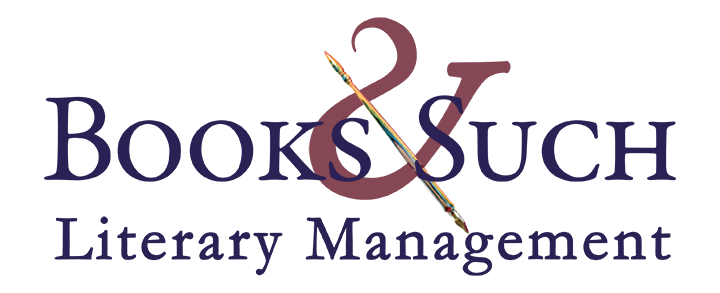Blogger: Michelle Ule
Location: Mount Hermon Christian Writers Conference
I knew I would have to be edited at some point, I just didn’t have any idea what that meant. My colleague Liz Johnson, who wrote A Star in the Night for the same A Log Cabin Christmas Collection, and I read through each other’s manuscripts and made comments. Beyond that, I figured someone would let me know when it was time for The Dogtrot Christmas to be edited.
My Facebook account got hacked in mid-February, and I had a difficult time clearing that up and getting myself back online with my regular e-mail account as a result. One day, I found an e-mail at work: my editor was desperately trying to reach me.
And that’s when I met Jamie Chavez.
Editors probably have to tell writers how much they love their projects, and Jamie is an excellent businesswoman. I preened at her kind words and then downloaded the letter describing where I needed to work.
I wasn’t too worried about it, editing is a good thing, and I was curious to see what errors I might have made. I also was a little nervous because I had a lot of things to do and the edited manuscript was due back in about a month–or, the day I returned from a vacation to Budapest.
The letter from my editor detailing “issues” was three pages long. I shared it with my critique group, since we met the next day and they had worked with me on this project. They were shell shocked. I laughed and felt chagrined.
That clever woman, Jamie Chavez, picked up every single plot point I had tried to fudge.
My husband read the letter. “She’s good,” he said halfway through the first page. “She’s very good,” he said halfway through the second page. When he finished he looked at me and asked, “What do you think?’
“She caught me!”
Using Track Changes, I went to work on my 16,986-word manuscript. I probably spent six hours combing through it again, explaining, tightening, altering words and engaging in a Track Changes discussion with the editor about the manuscript.
I loved it.
Before I sent the novellat back to her two days later, however, I contacted her with a worried e-mail. “I was very careful about how many words I used in writing this manuscript. If I make the changes you indicate, I’m going to go over my 17,000-word allotment.”
Jamie contacted her supervising editor at Barbour, Becky Germany, and learned I could go higher–as high as 20,000 words, if need be.
WHAT!?
That gave me plenty of wriggle room and enabled me to make the excellent changes Jamie suggested. I’d also like to note I made no grammatical errors . . . 🙂
Final word count: 17,651
I returned the manuscript to Jamie, alerting her to my departure on April 2; I needed to be done with the editing sooner rather than later.
She got back to me with another round of Track Changes. She responded to my comments, accepted most of them, made a few more suggestions, we e-mailed back and forth a couple more times, and it was done. We sent in the completed manuscript two weeks early.
Done.
The marketing phase begins next.

A Log Cabin Christmas Collection will release in September 2011. Here’s the cover.
Have you worked with an editor? What have you learned about writing from having a professional go through your work line-by-line? What tricks do you use while self-editing?

Congratulations! Can’t wait to read your story and the others in the collection. Love the cover of the book.
Jamie sounds like an editor everyone hopes for. I haven’t had experience yet with a publishing house editor. I have a couple of friends, with published novels, who have helped me considerably. I discovered a “taste” of humility, isn’t so bad!
Thank you Michelle for sharing your journey. Have a wonderful time at the Mt. Hermon Conference!
Wow! This is a fabulous ending of the first phase for you. Thanks so much for opening up and sharing your story this week. I’ve really enjoyed it.
I absolutely love the cover for this book. I want a copy of it right now, never mind September.
I’ve worked with two editors, but one was for articles and the other for kid’s books, so I’ve never stared down at the same level of revisions you have. What I have learned is that I tend to focus on the sense of sight too much. I’ve learned that I’m still awful with titles. And I’ve learned like you did, that you’ll get caught trying to take a short cut.
I willingly admit I am a horrible self-editor. The only way I can tackle picking up typos, grammar errors, and inconsistencies is if I stay away from the project for at least a month. It’s amazing what you pick up with fresh eyes.
Wishing you the best, Michelle. I’m so excited for you!
Thank you for your kind words, Michelle! It was a delight to work on The Dogtrot Christmas because it is a beautiful story with engaging characters. Forgive me for self-promotion but I just want to note that the link to my website didn’t work for me (and it could be a failing of my system here) but just in case, if you remove the S after the “http” it will work. 🙂
It’s been wonderful to read about your journey, Michelle! Congratulations on your accomplishment!
Your book makes me want to cozy up to a warm fire–inside what else–a log cabin!
Oh, a question…were you able to have any input on your cover? Just curious.
But you make it sound so easy!
And I love that Jamie is still in edit mode as she reads blog posts–or at least ones with links to her site.
Can’t wait to read the book. This has been a fun journey.
The cover is superb. I already look forward to buying a copy, so good job on the marketing w/ these posts as well!
Editing is hard, but I’ve found you hit the nail on the head. It’s the spots I “fudge on” to quote you, that are the ones I have to go back and fix.
Thanks for sharing this journey w/ us. One of my favorite blogs by far.
Okay, I’m at Mount Hermon trying to post on my I-touch. Just follow Jamie’s advice on how to access her website, technology and I are struggling!
Michelle, I agree with Jamie that yours was a delightful story to read. I quite enjoyed it and am so glad that your first editing experience was so positive. The first feedback I received from an editor on my first book was also three pages long. 🙂 So were the second and third. 🙂 But by the time the book was done it was SO much better than what I had written alone. God bless good editors!
I’ve been a quiet reader of your posts this week, Michelle, and just wanted to say thank you for sharing your journey here. It amazes me how each writer’s path is a little different, but we all end up at the same tiki hut (or log cabin). 🙂
Best wishes as you anticipate the release of your novella!
I’ve worked with Jamie and she’s all you say! I hired her in her role as freelance developmental editor just to look at my first chapter (she was recommended to me by an acquisitions editor who liked my concept, but not my lack of fine tuning!). Jamie helped me SO much. Turns out my first chapter was two chapters and my beginning was buried well into the MS. She’s also quite reasonable and worth every penny. So glad for this opportunity to sing her praises.
I haven’t yet had the opportunity to work with a professional editor. I actually really want to work with one. I know my writing would grow so greatly!
In my own self-edits, after the first draft, I read through for awkward phrases or sentence structure. I look to see if the thoughts I have make sense and clearly convey what I want. I then go back and try to strengthen weak verbs. Then I go back once again to tighten up sentences. (I’m regularly too wordy.)
I find the suggestions of my critique group and my husband help more than what I can self-edit.
I *love* the cover of that book. The cover alone would entice me to take a peek. Mountains plus snow in a scene makes for a happy me.
Thanks again for sharing your exciting journey with us this week! Congratulations!
Thank you, Sarah. 🙂 I look forward to editing your WHOLE book when you get your book deal. 🙂
What I have learned is that the editor is not always right. This is especially true for short fiction; a guest editor might decline your work, yet it might get picked up later by the same magazine, but by a different editor. 😉
There are a few techniques I picked up for self-editing: the most useful is to re-read until I get bored, then delete the boring part. If I can’t get excited by my own writing, how can I expect a reader, editor, or agent to?
Good thought! Elmore Leonard has a similar theory (10 Rules for Writing). But you know Michelle’s talking about a different sort of editor altogether here…You’re talking about the sort of editor whose first priority is his/her periodical/journal and its contents, deciding if he/she wants the author on the team; Michelle’s talking about the sort of editor whose first priority is the author’s work, and is on the author’s team!
I must hasten to add that you’re absolutely right about the “rightness” of editors, though: give a manuscript to 5 different editors and you’ll get 5 different sets of editorial notes! HA!
Now returned from Mt. Hermon, if anyone is still reading, I’d like to note Jamie did take my objections well and it drove us both to the dictionary. On that minor quibble, she bowed to me. 🙂
Thanks to all for good wishes.